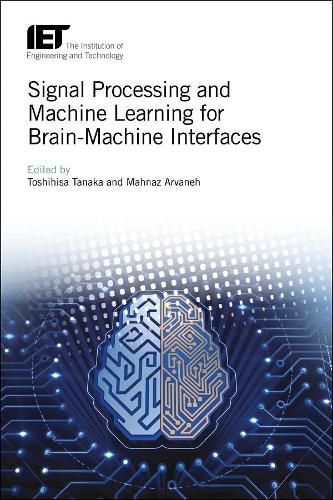Readings Newsletter
Become a Readings Member to make your shopping experience even easier.
Sign in or sign up for free!
You’re not far away from qualifying for FREE standard shipping within Australia
You’ve qualified for FREE standard shipping within Australia
The cart is loading…






Brain-machine interfacing or brain-computer interfacing (BMI/BCI) is an emerging and challenging technology used in engineering and neuroscience. The ultimate goal is to provide a pathway from the brain to the external world via mapping, assisting, augmenting or repairing human cognitive or sensory-motor functions.
In this book an international panel of experts introduce signal processing and machine learning techniques for BMI/BCI and outline their practical and future applications in neuroscience, medicine, and rehabilitation, with a focus on EEG-based BMI/BCI methods and technologies. Topics covered include discriminative learning of connectivity pattern of EEG; feature extraction from EEG recordings; EEG signal processing; transfer learning algorithms in BCI; convolutional neural networks for event-related potential detection; spatial filtering techniques for improving individual template-based SSVEP detection; feature extraction and classification algorithms for image RSVP based BCI; decoding music perception and imagination using deep learning techniques; neurofeedback games using EEG-based Brain-Computer Interface Technology; affective computing system and more.
$9.00 standard shipping within Australia
FREE standard shipping within Australia for orders over $100.00
Express & International shipping calculated at checkout
Brain-machine interfacing or brain-computer interfacing (BMI/BCI) is an emerging and challenging technology used in engineering and neuroscience. The ultimate goal is to provide a pathway from the brain to the external world via mapping, assisting, augmenting or repairing human cognitive or sensory-motor functions.
In this book an international panel of experts introduce signal processing and machine learning techniques for BMI/BCI and outline their practical and future applications in neuroscience, medicine, and rehabilitation, with a focus on EEG-based BMI/BCI methods and technologies. Topics covered include discriminative learning of connectivity pattern of EEG; feature extraction from EEG recordings; EEG signal processing; transfer learning algorithms in BCI; convolutional neural networks for event-related potential detection; spatial filtering techniques for improving individual template-based SSVEP detection; feature extraction and classification algorithms for image RSVP based BCI; decoding music perception and imagination using deep learning techniques; neurofeedback games using EEG-based Brain-Computer Interface Technology; affective computing system and more.